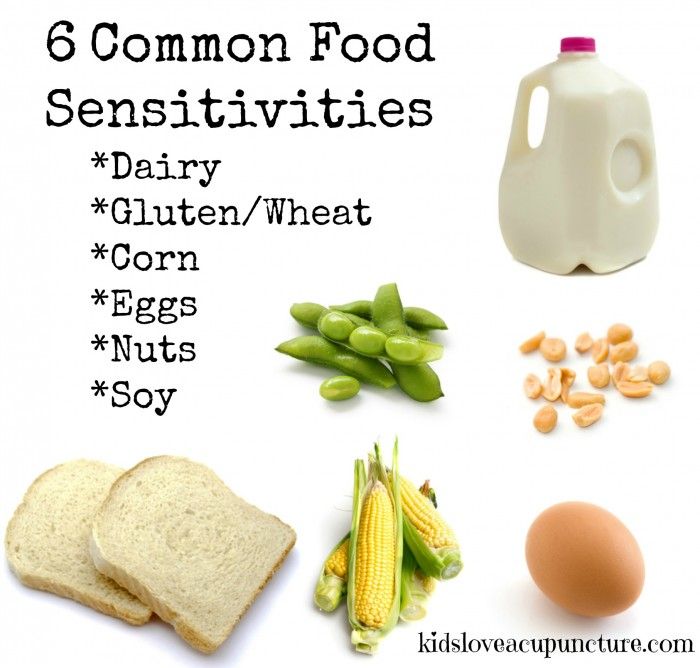Feeding baby hawk
Raptor Rehabilitator - What to do with a baby hawk, eagle or owl I found?
|
I just found a bird of prey (a raptor)! How cool is that?
Well, not cool, really. Not for you or for the terrified bird that has the potential to slice off one of your misguided fingers. Birds of prey, or birds that rely on a meat source for nutrition, are graceful and awe-inspiring, but are just as difficult as any other bird to rehabilitate. In fact, even wildlife rehabilitators often need special licensing to house and handle birds of prey and other predators. Owls, hawks, falcons, and eagles are all considered raptors. If you find an injured, adult raptor and are unable to easily contain it, call your local wildlife rehabilitator. There will be very little you can do in this situation other than try to steer the injured bird away from obstacles. Even once contained, do not handle the bird of prey. Baby raptors are charming little beasts, all fluff, with huge eyes and enormous feet. They are disarmingly cute when they sleep, spread out on their stomachs with their heads to the side. This is drastically different than an adult raptor, which will sleep in an upright position, ready to spring into the air at the slightest sound. To find a raptor rehabber in your area, click on my nationwide directory of wildlife rehabbers or do an online search for one in your area. In the meantime, you can still care for the eagle or hawk as advised below. Birds of prey are more prone to imprinting than songbirds, so it is very important that you handle the baby raptor as little as possible. A raptor that has imprinted on a human will not even mate with another raptor, but will look to humans for companionship. So, with this dilemma in mind, what do you do with an abandoned baby bird of prey? A general rule of thumb with any bird: If you find a fully-feathered baby raptor hopping around on the ground, it is safe to assume that baby is trying to learn how to fly. How does a wildlife rehabilitator care for a baby raptor? Because the imprinting process is so vital in birds of prey, most orphans must be fed by way of a species-specific puppet. This means that a hand puppet, designed to look like that particular species of raptor, is used to administer feedings until the baby can tear into its own food. Even though the feeding puppet prevents human imprinting, injuries can sometimes occur to the wildlife expert’s hands. In some rare situations, a foster bird of the same species may take on the care of an orphaned hatchling. The most common dilemma with this is that foster birds are often birds that have been in captivity for so long, they have lost any inclination toward their own species. In even rarer circumstances, a male bird of prey may take on the care of his own hatchlings, though this has not been seen in captivity. When the raptor is old enough to fly and can hunt live food released into its enclosure, the rehabilitators will consider release. Depending on how much human contact the bird has had—adult birds with injuries experience more hands on work with people than orphaned chicks—various methods of release are implemented. Injured birds often must recover their strength before release back into the wild is considered. Experts accomplish this by placing the bird in an enormous aviary, one that is large enough to walk back and forth in. Like a human physical therapist, the rehabilitator will put the bird through a series of flight sessions by walking back and forth, the bird always flying away from the handler. In time, this exercise will allow a complete recovery of strength, and ultimately allow for release back into nature. Raptor rehabilitation is a specialty among wildlife rehabilitators. This niche often requires special training and approval from local and state governments. Here are some other advice articles for wildlife rehabilitation: North Carolina - Raleigh - American Wildlife Refuge |
What Do Baby Hawks Eat? (And What To Feed Them)
Misfit Animals is reader-supported. When you buy via links on our site, we may earn an affiliate commission at no cost to you.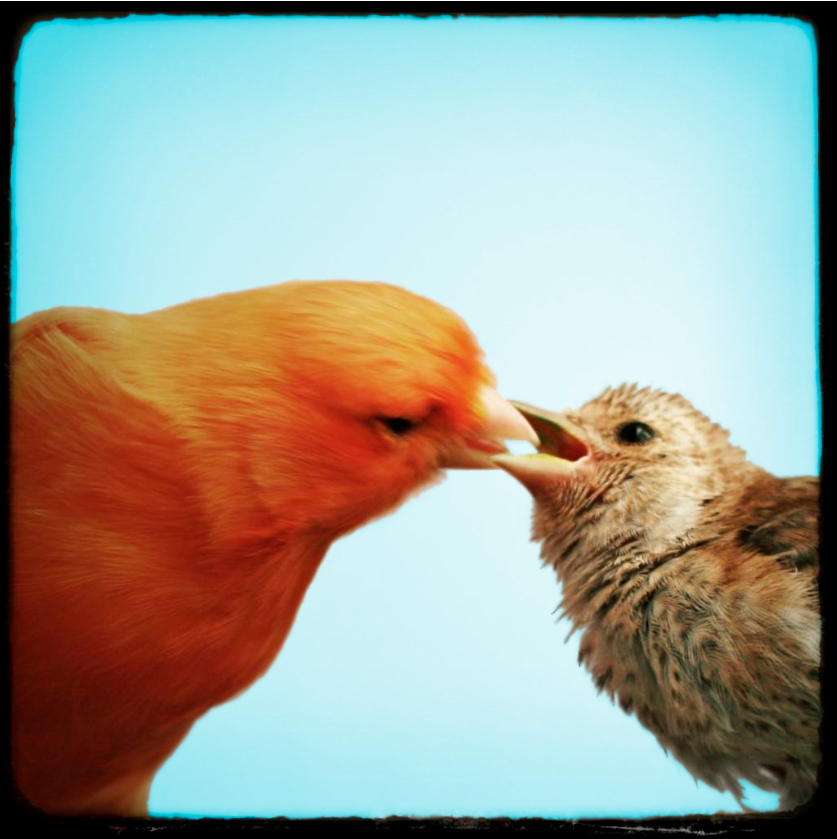 Learn More.
Learn More.
Baby hawks eat a combination of insects, birds, small mammals, and rodents. Hawks only eat meat, as they can’t process plants, dairy, or fruits. If you come across an abandoned hawk baby, don’t feed it milk but meat and water.
Hawks are, as other birds of prey, carnivores. They eat meat to survive.
As adult hawks are skilled hunters, they have no issue securing a meal. However, that’s not the case for younglings, who need to be fed by their parents.
But what do baby hawks eat?
In this post, we’ll explore some of the different things that baby hawks might eat, how they’re fed, and the difference among species.
What Do Baby Hawks Eat?A baby hawk’s diet consists of much the same as an adult, including insects, small birds, small mammals, and rodents. Until they’re 4 to 5 weeks old, their mother feeds them by giving them small pieces of meat from prey she, or the male catches.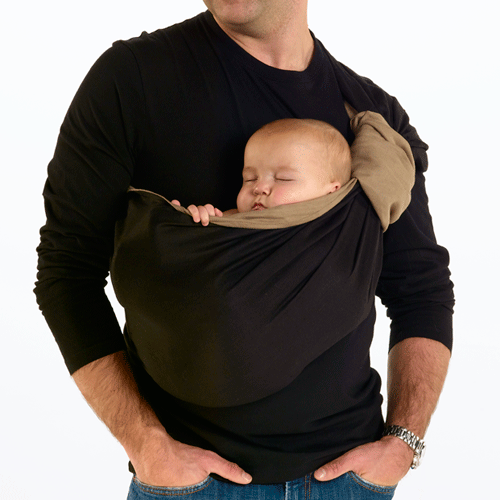
The diet of a baby hawk depends on a large variety of factors including what type of baby hawk they are, how young they are, and where they live.
However, they largely eat the same things as adult hawks. For the first part of their lives, they’re fed by their mother. When they reach 4 to 5 weeks, they start eating by themselves.
InsectsInsects are a big part of any hawks’ diet, especially when they’re young. The most common insects eaten by hawks include:
- Grasshoppers
- Crickets
- Beetles
- Ants
- Spiders
- Larvae of mosquitoes
- Flies
Birds are frequent prey of hawks[1]. It’s one of the biggest parts of hawks’ diet, as some hawks almost exclusively hunt songbirds.
As songbirds, waterfowl, and upland game birds are easier to catch, these are typically the ones that are hunted.
Here’s a list of birds that baby hawks frequently eat:
- Carolina Wrens
- Chickadees
- American Goldfinch
- Northern Flicker
- Western Grebe
- Sandhill Crane
- Pigeon
- Bobwhite Quail
- Ring-necked Pheasant
- Wild Turkey
- Black Rail (endangered)
- Common Moorhen
- Sora (endangered)
Another major part of many hawks’ diets are small mammals. Hawks seem to prefer mice and other small prey over most other types of foods because they are abundant, easy to catch, and readily available.
Hawks seem to prefer mice and other small prey over most other types of foods because they are abundant, easy to catch, and readily available.
Mice are high in protein and fats, which is what growing birds need most in their diets. Here are some of the small mammals eaten by baby hawks:
- Shrews
- Voles
- Chipmunks
- Rabbits
- Hares
- Muskrats
Rodents are a big part of Buteo hawks’ diet – these are hawks that hunt in open land. Here, rodents are easy to spot compared to a forested environment. The most common rodents include:
- Rats
- Ground squirrels
- Porcupine
- Marmot
- Beaver
Once the mother hawk has captured her prey, she tears it into smaller pieces that are easier for the baby hawks to swallow. She then carries these morsels back to the nest where she feeds them to her young[2].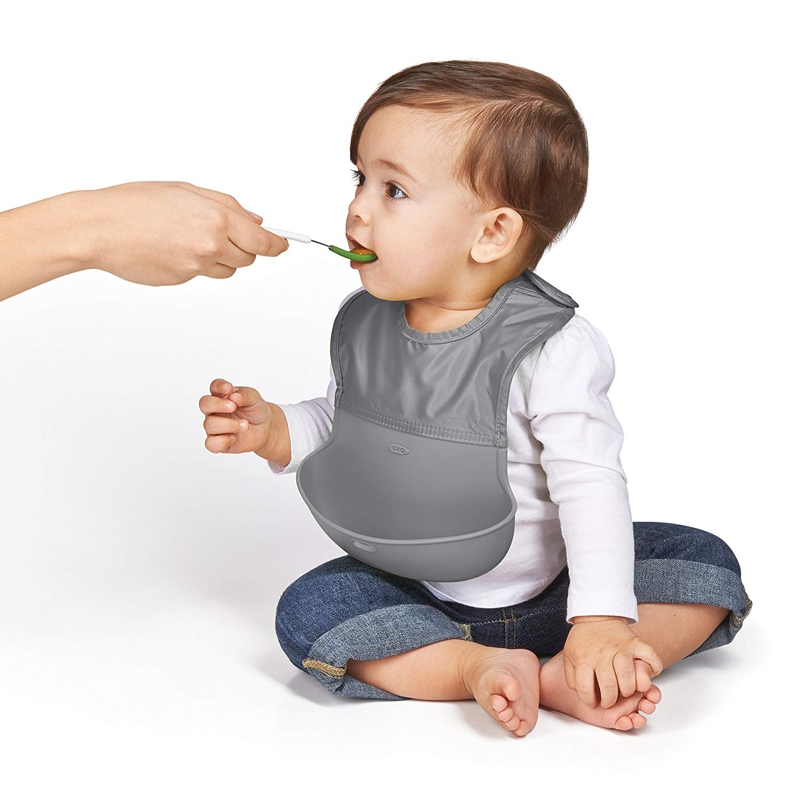
After 4-5 weeks, the baby hawks are able to begin eating whole prey on their own. Their mother continues to feed them for an additional 2-3 weeks until they fledge.
This feeding behavior of tearing food into smaller pieces and carrying it back to the nest to feed it to the young happens regardless of what kind of prey the mother catches. They basically swallow whatever their mother brings them.
What to Feed Baby HawksIf you come across an abandoned baby hawk, you should feed it small pieces of meat and a few drops of water. Don’t give them milk and bread, as they can’t process them.
A baby hawk eats the same food as an adult hawk: meat.
Unfortunately, nature can be harsh at times, which can lead to abandonment. If you ever come across a hungry baby hawk, and you want to feed it, you should provide it with small pieces of meat.
Make sure that it’s really abandoned, and that its mother isn’t around. Next, you should call Animal Rescue.
Next, you should call Animal Rescue.
You should never give your baby hawk any dairy products, vegetables, or fruit. Also, never feed a hawk anything spoiled or rotten. Throw the food away immediately if it is contaminated.
Hawks rely entirely on meat for sustenance, as their digestive system can’t process anything else. Dairy and plant matter will cause more harm than good.
Can You Feed Wild Hawks?You should not feed a wild hawk. They’re great hunters, and if they’re hungry, they should have no problem finding prey and catching it. They’re also not very fond of humans, and will most likely fly away.
Hawks rely on their hunting skills to survive. And they’re skilled at it. If a hawk is hungry, it’ll hunt down prey.
Some people think that because a wild hawk is injured or sick, feeding it will make it better. In some cases this might be true, however, more often than not it will make the animal dependent on humans for food and kill it.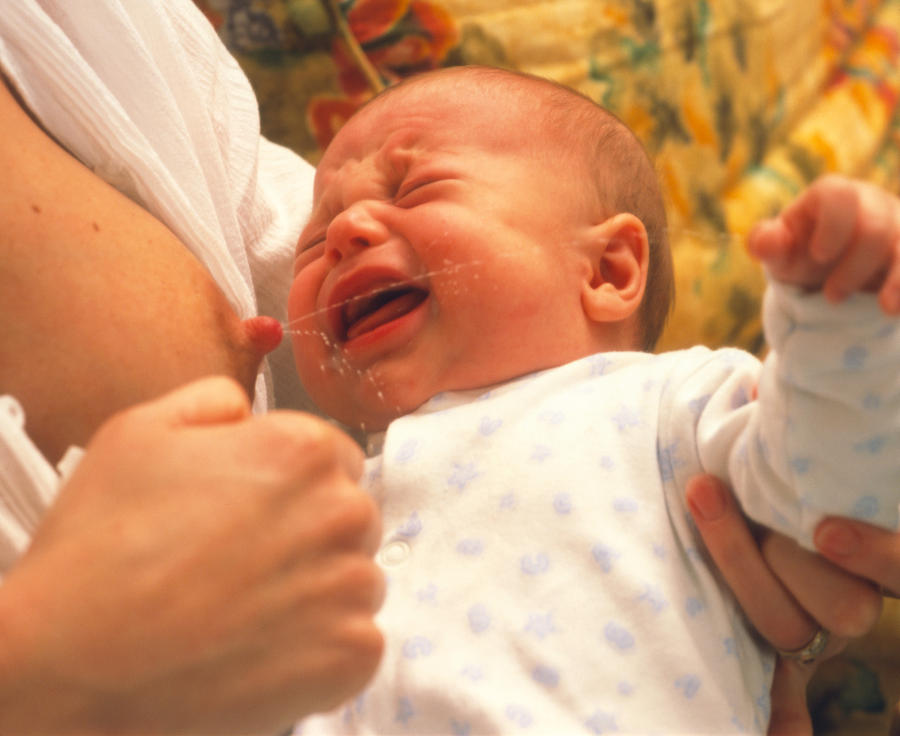
Hawks are solely carnivores. A hawk’s diet consists fully of meat, primarily from small rodents, insects, birds, and small reptiles[3].
Fruits, berries, plants, dairy, and other food resources are not a part of a hawk’s diet. It’s 100% made up of meat. Hence, it’s safe to assume that they are carnivores.
While other birds may feed on plant matter, birds of prey feed on exactly that: prey.
Hawks have sharp talons which they use to catch their prey. The talons allow the hawk to hold on to the prey, even when it is struggling.
Types of Hawks and Their DietsThere are two types of hawks: Accipiters and Buteos.
| Accipiters | Buteos |
Less than 50 different species (ex.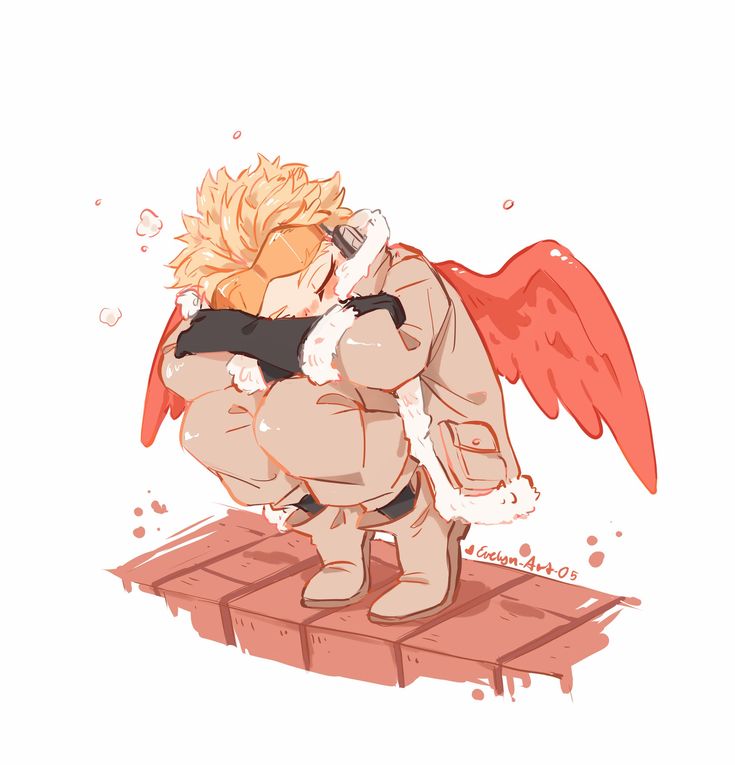 Cooper’s Hawks and Sharp-shinned Hawks) Cooper’s Hawks and Sharp-shinned Hawks) | More than 50 different species (ex. Red-Tailed Hawks) |
| Smaller, sleeker, lighter build | Larger, heavier build than Accipiters |
| Have shorter, round wings compared to the longer, more slender wings that Buteos have | Longer, less slender wings compared to the shorter, rounder wings of Accipiters |
| More aggressive | Less aggressive |
| Primarily eats birds | Primarily eats rodents |
Hawks are well-known predators in the avian kingdom. The diet varies from species to species, and may also deviate depending on location, capabilities, and availability.
Some hawks prey mostly on birds, while other hawks hunt more rodents.
Related: Do Hawks Eat Dead Animals?
What Do Sharp-Shinned Hawks Eat?Sharp-shinned hawks (Accipiter) are the smallest type of North American hawk, and their diet is almost entirely made up of songbirds (of all sizes).
Although they will eat other prey, such as rabbits and amphibians, this dietary preference makes them especially dangerous to songbird populations. This is large because songbirds also are small, and there’s plenty of them.
What Do Cooper’s Hawks Eat?Cooper’s hawks (Accipiter) are medium-sized raptors with short, barred tails and long wings. They have gray bodies and have brown heads, breasts, backs, wings, and tails.
These birds of prey primarily eat small animals such as mice, squirrels, songbirds, frogs, fish – as well as rabbits and hares. Adult Cooper’s hawks eat larger prey than the juveniles, although they will still hunt some smaller animals.
What Do Northern Goshawks Eat?Northern Goshawks (Accipiter) eat many different kinds of food. They like to eat songbirds and grouse, but they also like to hunt woodpeckers.
Sometimes northern goshawks will go after animals that are bigger than themselves. They have also been known to attack young red-tailed hawks or osprey.
Red-tailed hawks (Buteos) are medium-sized hawks in North America. They have brown feathers with red on their tail, and their eyes are dark.
As far as animals go, red-tailed hawks eat mostly rodents, including ground squirrels, pocket gophers, and mice. However, they also like to eat larger mammals like rabbits, skunks, and even other birds if they are small enough for the hawk to catch.
These animals are usually hunted on or near the ground, but red-tailed hawks can fly at great heights to capture prey out of midair as well.
How Often Do Baby Hawks Eat?Growing birds need to feed more often than adults, but they’ll feed less when doing so. When they’re very young, they may eat every other hour.
During its first week of life, a baby hawk eats almost constantly. Each day it needs two or three prey items, and the more often the better because it’s growing at such an accelerated rate.
Each day it needs two or three prey items, and the more often the better because it’s growing at such an accelerated rate.
Baby hawks are fed by their parents. In the first 4 to 5 weeks, their mother will tear small pieces of meat off of the prey and feed it to the young.
After this initial period, prey is simply thrown into the nest for the young to feed on by themselves.
A baby hawk needs to eat often in order to grow quickly, and because it’s developing so rapidly, it also has to eat a lot (relative to its size) in order to get enough nutrients.
Related: How often do hawks eat?
What Do Adult Hawks Eat?Adult hawks eat many of the same things that baby hawks eat. The diet doesn’t change much, as they simply eat smaller pieces and smaller quantities.
The diet doesn’t differentiate much between adult hawks and baby hawks. Some of the most common prey for adults hawks include:
Some of the most common prey for adults hawks include:
- Birds
- Rodents
- Small mammals
- Insects
- Small reptiles
Depending on the species, and the type (accipiter or buteos), a hawk’s diet may vary.
ConclusionBaby hawks and adult hawks eat mostly the same foods. They both eat small animals, such as mice and crickets, songbirds, small mammals, and insects.
Baby hawks eat more often though. They need food often to keep up with their rapid growth in this stage of their life. Depending on their species, they may eat more rodents or birds.
Contents
- What Do Baby Hawks Eat?
- How Do Hawks Feed Their Babies?
- What to Feed Baby Hawks
- Can You Feed Wild Hawks?
- Are Hawks Carnivores?
- Types of Hawks and Their Diets
- How Often Do Baby Hawks Eat?
- What Do Adult Hawks Eat?
- Conclusion
How to feed a hawk chick at home. A rare visitor to Yamal.
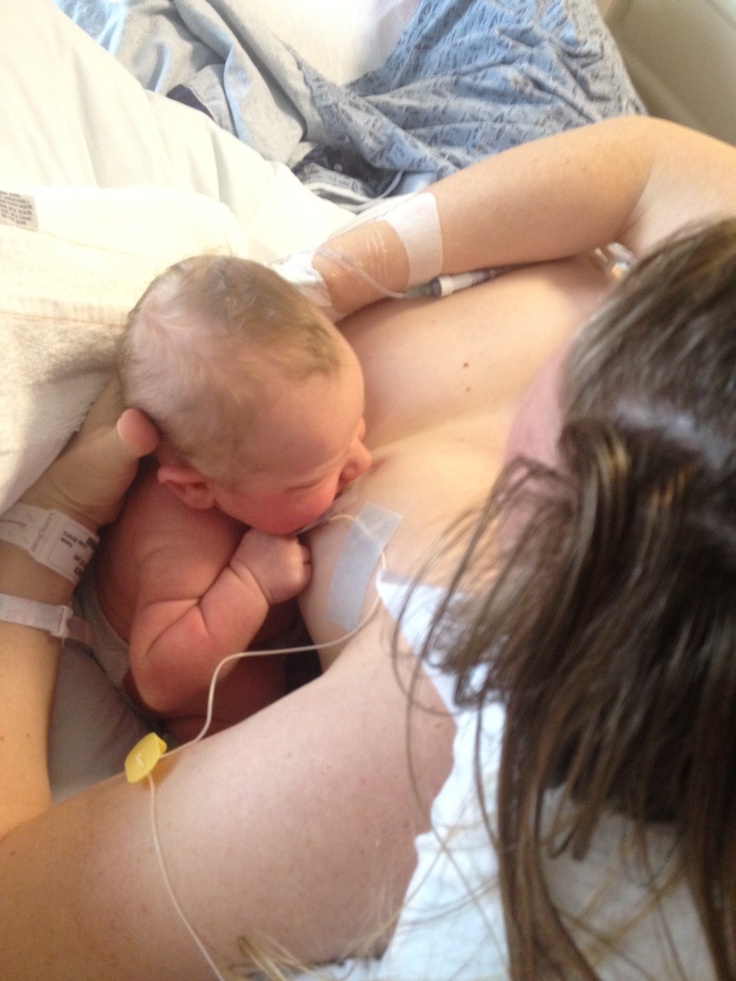 The wounded goshawk settled in an ordinary apartment. What to feed a chick of a bird of prey
The wounded goshawk settled in an ordinary apartment. What to feed a chick of a bird of prey Every person sooner or later encounters nature, which requires sympathy and effective measures from him. This happens much more often than a city dweller thinks, and the lack of elementary knowledge often turns out not to be a salvation, but the death of living beings.
When I was a child, I myself picked up a nestling of an insectivorous bird - apparently a whitethroat. My grandfather - a fanatical mushroom picker and gardener - identified it as a wren and, without any hesitation, advised me to pick nettles and plant a bird in it, as in my own home. I fed her a white bun with milk, which caused the bird to get severe diarrhea. Unable to endure the hardships of captivity carefully arranged by me, the chick died. nine0005
The path of a bird of prey to man is sometimes unexpected and unbelievable. Walking in the forest, you find a big-eyed, beak-clicking miracle - an owlet that bites desperately and grabs outstretched friendly hands with its clawed paws.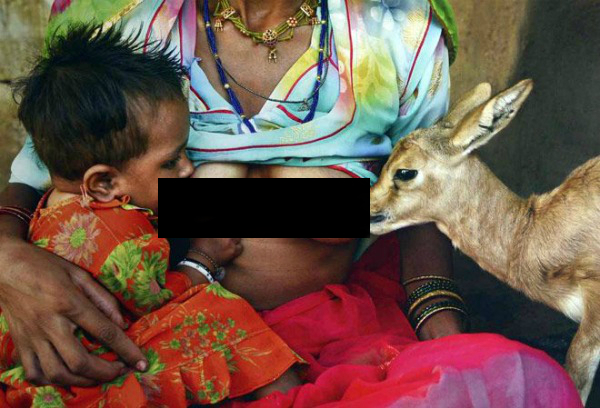 But, despite the huge resistance, you decide to save him from the cruel nature, take him home, feed him sausage, and the owlet, obviously not appreciating the hospitality, dies and dies. It happens that in the village you save the “kobets” from cruel boys, put him in the best case in a chicken coop, try to feed the bird with an egg and milk, pour grain into his feeder, surprised that the bird does not eat. After a long starvation, the hawk begins to eat everything, and, having brought you a short joy about his salvation, departs to another world. nine0005
But, despite the huge resistance, you decide to save him from the cruel nature, take him home, feed him sausage, and the owlet, obviously not appreciating the hospitality, dies and dies. It happens that in the village you save the “kobets” from cruel boys, put him in the best case in a chicken coop, try to feed the bird with an egg and milk, pour grain into his feeder, surprised that the bird does not eat. After a long starvation, the hawk begins to eat everything, and, having brought you a short joy about his salvation, departs to another world. nine0005
At one time, illiterate "businessmen by nature" began to sell at the bird market the birds of prey that came from nowhere - goshawks, saker falcons, as well as birds of common species - buzzards, kestrels, eared owls - into the hands of even more illiterate, so-called nature lovers . Their fate is even more unenviable - after all, they were purchased for money and therefore they no longer had to rely on the indulgence of the owners. They certainly died in captivity, not seeing their native free sky. nine0005
They certainly died in captivity, not seeing their native free sky. nine0005
There are truly unique survivalists among birds. I saw Hobby (Falco subbuteo) , a pronounced ornithophage that feeds exclusively on passerines in the wild. The owners fed him boiled and smoked sausages, gave him milk to drink, and, nevertheless, he lived on such a diet for more than a year. Its plumage was simply terrible - rumpled, broken and even greasy, its existence day after day was simply a miracle. But it took a long time to transfer the falcon to a more natural diet - he stubbornly refused it, preferring sausage to everything. nine0005
I watched a pair of Steppe Eagles being fed ( Aguila rapax ) fat and bones: what was left from the primary processing of meat by the janitors of the living corner in the children's park in Fili. The janitors were very happy while they had a pair of eagles, since they (the janitors) always had fresh meat to eat and sell, and they sincerely grieved when their nurse died, unable to withstand the hardships of captivity. Despite a clearly unsuitable diet, the female eagle laid about 10 eggs during her life, which she, however, ate, trying to restore her energy balance. nine0005
Despite a clearly unsuitable diet, the female eagle laid about 10 eggs during her life, which she, however, ate, trying to restore her energy balance. nine0005
When purchasing a bird of prey, the first thing to think about is what to feed it? Ideal to feed with natural foods, such as pigeons. Therefore, if a person cannot kill game, then it is better not to take on the maintenance of birds of prey in captivity. Of course, when a bird of prey catches prey for food, it looks natural, but when some falconers begin to catch pigeons on the streets of the city, this causes quite reasonable surprise or indignation among those around them. Sometimes people around think that a person has nothing to eat and he is forced to wander through the garbage heaps and catch poor birds, or, believing that they are dealing with an obvious sadist, they rush to protect God, wander through the garbage heaps and catch poor birds, or, believing that they are dealing with an obvious sadist, rush to protect God's creatures. Yes, and how not to understand an old woman who manages to carve out bread for pigeons from her beggarly pension, and then a hefty bityug appears, grabs the first pigeon that comes across and puts it in her bag with the obvious intention of eating it. How to be? nine0005
Yes, and how not to understand an old woman who manages to carve out bread for pigeons from her beggarly pension, and then a hefty bityug appears, grabs the first pigeon that comes across and puts it in her bag with the obvious intention of eating it. How to be? nine0005
The Moscow Zoo, which has vast experience in feeding birds of prey, uses the following simple scheme: 4 days of regular lean beef, 2 days of mice or rats, then 1 fasting day. It should be noted that birds even breed on such a diet, which indicates a well-chosen diet. 200-250 g of meat is enough per day for a goshawk, 80-100 g of meat for a long-eared owl, 80-100 g of meat for a red-footed falcon or common kestrel. Mice and rats can be bought, say, at the bird market. They will be caught by the bird itself and then eaten. Most people have much less compassion for these tailed mammals: it is clear that they annoyed everyone great, hosting in dachas, in village houses and even in city apartments. nine0005
Necessary precaution: do not use poisoned mice and rats, because if a rat survives any dose of a poisonous substance, then a bird of prey does not have such resistance to poisons.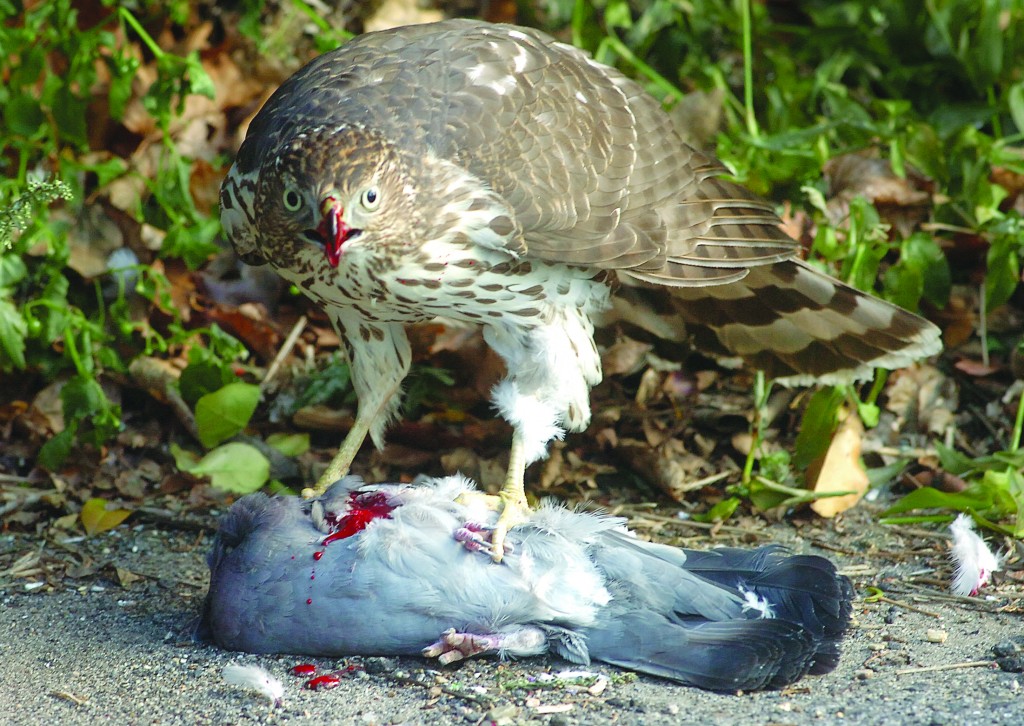
Vladimir Romanov chief veterinarian of the bird hospital "Green Parrot"
The hawk is a bird of prey that belongs to the subclass Neopalatine, the hawk-like order, the accipitridae family.
According to one version, the hawk got its name due to the speed of flight or gaze, since the stem "astr" means "fast, sharp, impetuous". Some scholars translate the hawk literally as "a bird with a sharp eye or swift, swift flight." According to another version, the name is associated with the bird's diet: jastь "eats" and rębъ "partridge", that is, eating partridges. It is possible that its color is mentioned in the name of the bird, since rębъ can be translated as “speckled, motley”. nine0005
Below is a brief description of several hawk species.
- Goshawk ( aka big hawk) ( Accipiter gentilis )
Belongs to the genus of true hawks and is the largest representative of its kind. The weight of the bird varies from 700 g to 1.![]() 5 kg. The body length of the hawk is 52-68 cm, and the wing length is 30-38 cm. Females are larger than males. For its large size, the bird is also called a large hawk. The feathers of the goshawk are shortish, slightly rounded. The tail is long and also rounded. The plumage of adult birds from above has a grayish-brown or gray-brown color. Below the body is light with transverse brown stripes. Undertail white. The hawk's head is darker. White feathers located above the eyes set off the superciliary ridge that protects the eyes and looks like an eyebrow. The plumage of females is darker than that of males. Young goshawks are brown above with buffy and whitish spots. Their abdomen is light or buffy with dark longitudinal streaks. Among the goshawks living in the northeastern regions of Siberia and Kamchatka, there are completely white hawks, some of them may have grayish spots on the back and abdomen. The claws of the bird are black, the paws and the cere are yellow, the beak is blue-brown with a black tip, the iris is yellow-orange, it may have a reddish tint.
5 kg. The body length of the hawk is 52-68 cm, and the wing length is 30-38 cm. Females are larger than males. For its large size, the bird is also called a large hawk. The feathers of the goshawk are shortish, slightly rounded. The tail is long and also rounded. The plumage of adult birds from above has a grayish-brown or gray-brown color. Below the body is light with transverse brown stripes. Undertail white. The hawk's head is darker. White feathers located above the eyes set off the superciliary ridge that protects the eyes and looks like an eyebrow. The plumage of females is darker than that of males. Young goshawks are brown above with buffy and whitish spots. Their abdomen is light or buffy with dark longitudinal streaks. Among the goshawks living in the northeastern regions of Siberia and Kamchatka, there are completely white hawks, some of them may have grayish spots on the back and abdomen. The claws of the bird are black, the paws and the cere are yellow, the beak is blue-brown with a black tip, the iris is yellow-orange, it may have a reddish tint.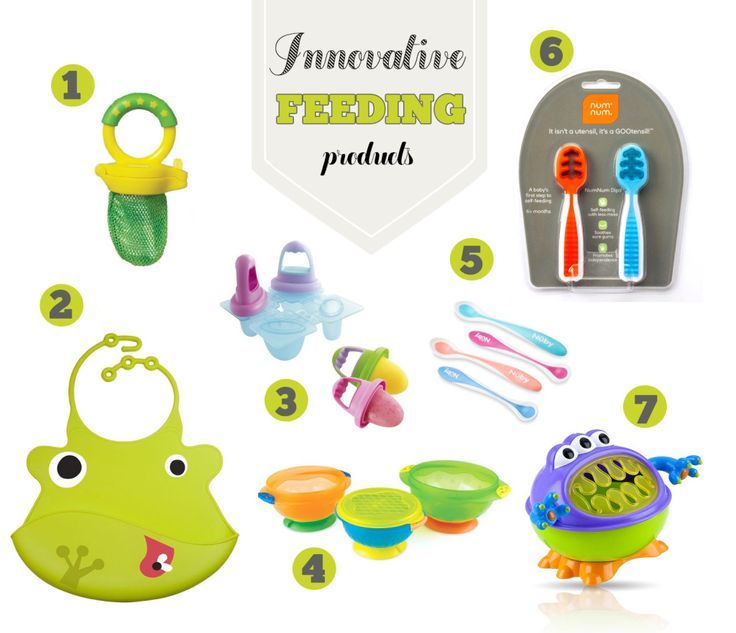 nine0005
nine0005
Goshawk inhabits North America, Europe, North and Central Asia, Russia. On the African continent, it is found in Morocco.
- African Goshawk ( Accipiter tachiro )
Representative of the true hawk genus. It is a hardy bird with strong paws and claws. The length of her body reaches 36-39 cm. Females are noticeably larger than males. The weight of males is 150-340 g, females - 270-510 g. The back of the African goshawk is gray, in males it is darker than in females. The tail feathers and tail are gray-brown with white stripes. The chest and abdomen are light with reddish-brown streaks. Undertail is white. Legs and eyes are yellow. The cere is greenish gray. nine0005
The African goshawk is found in central, eastern and southern Africa. The bird lives in the mountains, in the lowlands, in parks and plantations, and is found in both dry and wet forests.
- Sparrowhawk ( a.
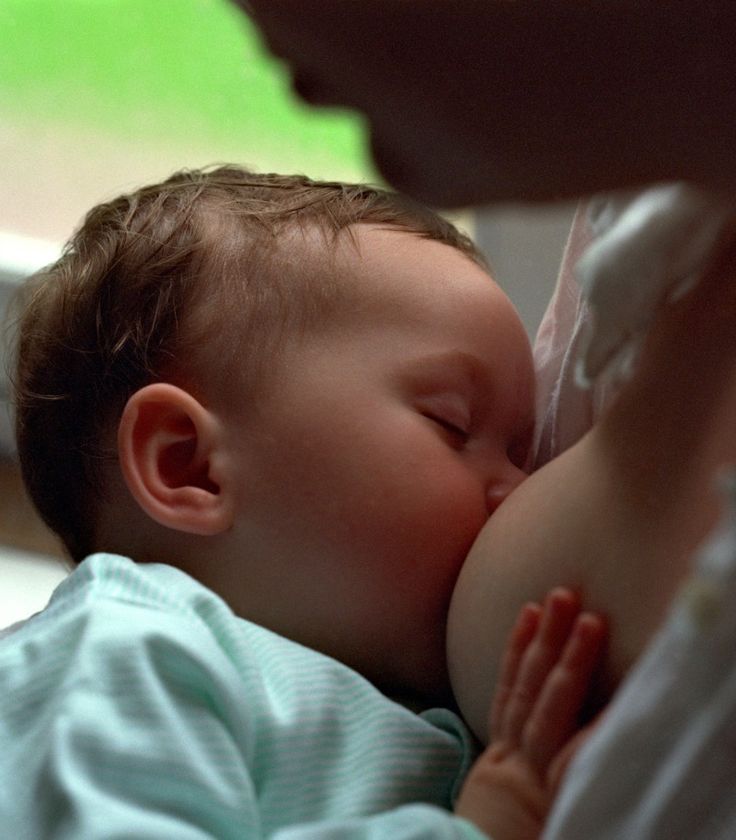 k.a. lesser hawk) ( Accipiter nisus )
k.a. lesser hawk) ( Accipiter nisus )
Lives practically throughout Europe, except for the very north, as well as in the northern part of Africa. In Asia, the hawk's range covers southwestern China. In summer, the Sparrowhawk lives and breeds in almost the entire territory of Russia, with the exception of the far north. Sparrowhawks winter in the northeastern regions of Africa and in Western, Central and Southeast Asia, on the Arabian Peninsula - in the Red Sea and the Persian Gulf. The Sparrowhawk is very similar to its relative, the Goshawk, but is much smaller. Because of this, he received the name small hawk. The length of its body is 30-43 cm, and the weight of the hawk reaches 120-280 g. The length of the bird's wing reaches 18-26 cm. The color of these two birds is almost identical: gray or brown plumage at the top, light with transverse stripes at the bottom. Only the stripes of the sparrowhawk have a reddish tint. The undertail of the bird is white, the claws are black, the legs and wax are yellow, the iris is yellow-orange, the beak is brownish-bluish. Females, as in previous species, are larger. nine0005
Females, as in previous species, are larger. nine0005
- Light hawk ( Accipiter novaehollandiae )
Belongs to the genus of true hawks. It got its name because of its color. But this species has two morphs, or subpopulations: gray and white. The gray morph is characterized by a bluish-gray color on the top of the back, head and wings. The abdomen is white with darkish transverse stripes. In the white morph, the plumage is completely white. The body length of this species is 44-55 cm, and the wingspan of a hawk varies from 72 to 101 cm. Hawks live in Australia, including on the island of Tasmania. nine0005
- Dark Songhawk ( Melierax metabates )
Belongs to the subfamily Melieraxinae, a genus of song hawks. These birds got their name because of the sounds they make, which have some melody. They have a body length of 38 to 51 cm. The wings and tarsals are slightly longer than those of other hawks, and the fingers are shorter.![]() The color is mostly gray: darker on the back and head, and lighter on the chest and neck. The abdomen is painted in gray and white stripes. The hawk's legs are red. The dark song hawk lives in Africa, south of the Sahara, inhabiting open forests and savannahs. nine0005
The color is mostly gray: darker on the back and head, and lighter on the chest and neck. The abdomen is painted in gray and white stripes. The hawk's legs are red. The dark song hawk lives in Africa, south of the Sahara, inhabiting open forests and savannahs. nine0005
- Crested hawk ( Accipiter trivirgatus )
Belongs to the genus of true hawks. Inhabits Southeast Asia: west and southwest of India, south of China, the islands of Indonesia, the Philippines and Ceylon, the Indochina peninsula. The appearance and color of the bird are typical for representatives of the genus. Body length 30-46 cm. The back and top of the wings are dark, the abdomen is light with characteristic transverse stripes. A distinctive feature of the crested hawk is a crest, or crest, on the lower part of the nape. nine0005
- European tuvik ( aka short-legged hawk) ( Accipiter brevipes )
This is a southern bird representing the genus of true hawks. It has average parameters: body length 30-38 cm, weight from 160 to 220 g, wing length for the male 21.5 - 22 cm, and for the female from 23 to 24 cm. The fingers of the bird are short. The color of the plumage of the top is brownish or slate-gray, the bottom is whitish with reddish or reddish-red transverse stripes. Juveniles are distinguished by a more brown tone of color on the top and stripes. In the middle of the throat they have a dark longitudinal stripe. Short-legged hawks are found in the south of Europe, in the Balkan countries, in the south of Ukraine, in the Crimea, in the south of the European part of Russia, in the Caucasus, in Transcaucasia, in Asia Minor and Iran. For wintering, the tuvik goes to the southern coast of the Caspian Sea, to Syria, Egypt, and the Arabian Peninsula. In addition to the usual food for hawks, it mainly feeds on frogs and lizards. nine0005
It has average parameters: body length 30-38 cm, weight from 160 to 220 g, wing length for the male 21.5 - 22 cm, and for the female from 23 to 24 cm. The fingers of the bird are short. The color of the plumage of the top is brownish or slate-gray, the bottom is whitish with reddish or reddish-red transverse stripes. Juveniles are distinguished by a more brown tone of color on the top and stripes. In the middle of the throat they have a dark longitudinal stripe. Short-legged hawks are found in the south of Europe, in the Balkan countries, in the south of Ukraine, in the Crimea, in the south of the European part of Russia, in the Caucasus, in Transcaucasia, in Asia Minor and Iran. For wintering, the tuvik goes to the southern coast of the Caspian Sea, to Syria, Egypt, and the Arabian Peninsula. In addition to the usual food for hawks, it mainly feeds on frogs and lizards. nine0005
- Red hawk ( Erythrotriorchis radiatus )
Bird of prey from the genus of red hawks. It has rather large forms: the length of the body is 45-60 cm and the wingspan is 110-135 cm. The male hawk weighs 635 g, the weight of females reaches 1100-1400 g. The general plumage of the body is reddish with numerous dark spots. The head and throat are light and covered with black spots. In the coloring of the chest and abdomen, there are both light and brown-red shades. In females, the abdomen is lighter than in males. The red hawk is the rarest bird of prey in Australia. It lives in the savannah and in open forest areas in the north and east of Australia, near water bodies. It feeds mainly on birds, including parrots and pigeons. nine0005
It has rather large forms: the length of the body is 45-60 cm and the wingspan is 110-135 cm. The male hawk weighs 635 g, the weight of females reaches 1100-1400 g. The general plumage of the body is reddish with numerous dark spots. The head and throat are light and covered with black spots. In the coloring of the chest and abdomen, there are both light and brown-red shades. In females, the abdomen is lighter than in males. The red hawk is the rarest bird of prey in Australia. It lives in the savannah and in open forest areas in the north and east of Australia, near water bodies. It feeds mainly on birds, including parrots and pigeons. nine0005
Retrieved from: laurieross.com.au
There is an ever-increasing number of people who want to keep raptors at home. Mostly they breed small owls, small falcons with hawks. When purchasing such a bird, you need to know: owls, falcons and hawks do not belong to poultry, and keeping them at home poses a significant risk to your health. A very important factor in keeping such a bird at home is normal nutrition, the use of beef or poultry meat as food does not create conditions for normal feeding for your pet. If we consider the physiological needs, then for the proper functioning of the digestive system of birds of prey, such components as wool, feather, small bones are important. These "offal" are non-digestible components in the stomach of a bird, from which dense lumps are formed - "pellets". The bird, under good conditions, regurgitates pellets as they occur. In the absence of normal nutrition, if, in a predator, pellets are not formed (i.e., food is completely absorbed), the regurgitation mechanism is disrupted. Subsequently, this affects the peristalsis (contraction) of the entire intestinal tract. The loss of pellets can provoke a violation of absorption from the lumen of the intestinal tract of vitamins and. For predators, the absorption of calcium and magnesium plays a special role; if they are deficient, this leads to a general systemic disease of the bird.
A very important factor in keeping such a bird at home is normal nutrition, the use of beef or poultry meat as food does not create conditions for normal feeding for your pet. If we consider the physiological needs, then for the proper functioning of the digestive system of birds of prey, such components as wool, feather, small bones are important. These "offal" are non-digestible components in the stomach of a bird, from which dense lumps are formed - "pellets". The bird, under good conditions, regurgitates pellets as they occur. In the absence of normal nutrition, if, in a predator, pellets are not formed (i.e., food is completely absorbed), the regurgitation mechanism is disrupted. Subsequently, this affects the peristalsis (contraction) of the entire intestinal tract. The loss of pellets can provoke a violation of absorption from the lumen of the intestinal tract of vitamins and. For predators, the absorption of calcium and magnesium plays a special role; if they are deficient, this leads to a general systemic disease of the bird.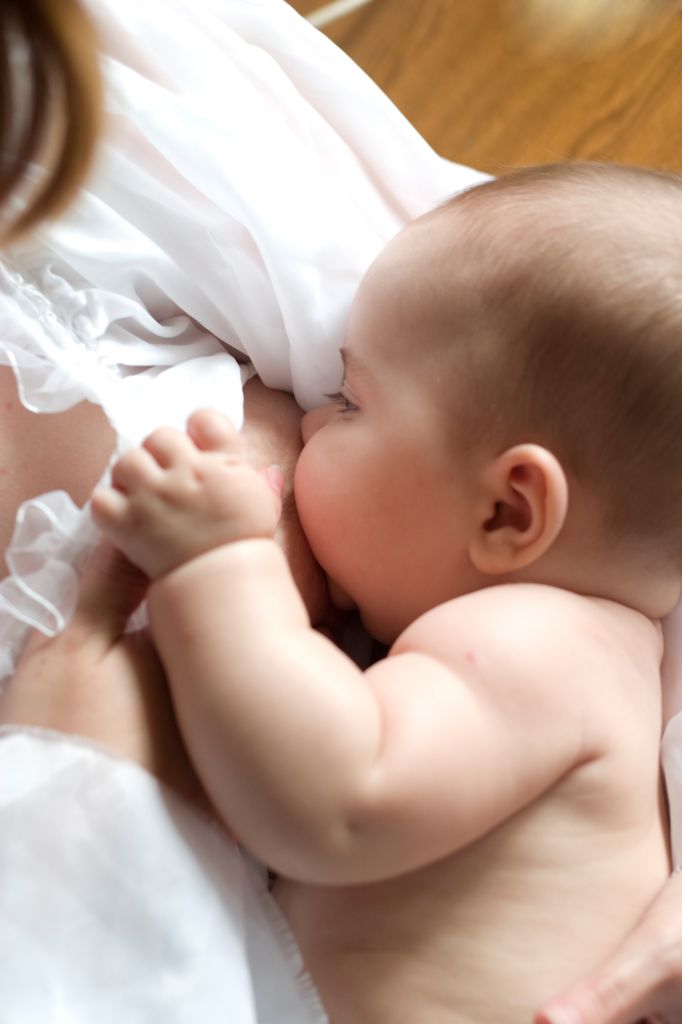 nine0005
nine0005
One of the main things to know about finding birds of prey at home is that droppings spread in a jet and cover a distance of two or three meters. Prepare for the fact that the room where you keep the bird will be spoiled, in addition it is a bad smell from the remnants of the feed parts.
The biggest problem is that birds of prey are not fully tamed and remain wild all the time, it is very difficult for them to overcome their fear of humans. When you try to communicate more closely, they always take a defensive stance, and are always ready to use their claws and beak. You can raise a predator chick, but they remain semi-wild. nine0005
If you decide to buy a bird of prey or pick up a sick predator, you should definitely remember the responsibility that you take on and be aware of its future fate. The best option is to equip an aviary or use a cage, but it is very important that the volume of the cage allows the bird to spread its wings without any problems, this will save the wings and feathers of the bird.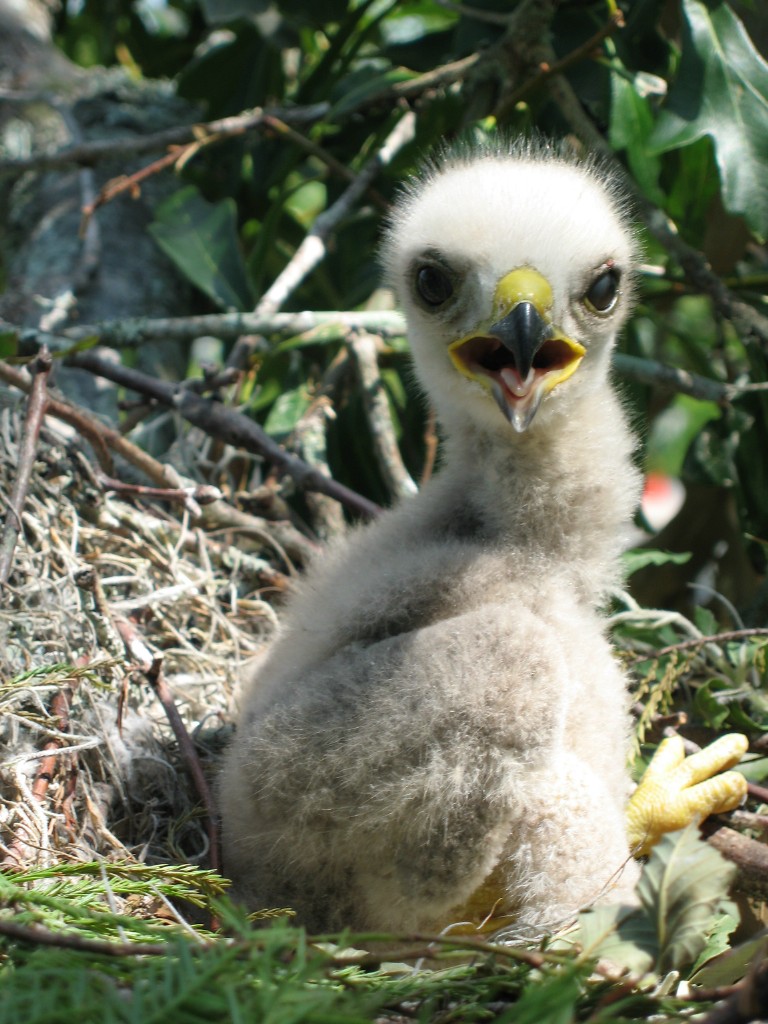 It is strongly not recommended to keep a wild bird at home without a cage, the first thing that awaits you is repairs, the second is possible bad situations and bird injuries. She should walk around the apartment only under your control, and take food and sleep only in a cage or aviary. nine0005
It is strongly not recommended to keep a wild bird at home without a cage, the first thing that awaits you is repairs, the second is possible bad situations and bird injuries. She should walk around the apartment only under your control, and take food and sleep only in a cage or aviary. nine0005
A good option for a small owl or small kestrel is a large parrot cage. Alternatively, you can build a cage with your own hands. The approximate parameters of the cage should be: 100x100x150 cm (for owls). Inside the cage, it is recommended to place one perch as a perch. The diameter of the perch should be such that the claws of the bird dug into the perch, and did not hang down, clasping it. A bird sitting on a perch should be able to freely flap its wings without touching the floor and walls of the cage. A small stump (chock) is placed in the center of the cage, this will be a table. It is necessary to install the perches and pull a plastic mat (artificial grass) over them. It is also recommended to lay a rug on a stump. This is necessary so that birds do not develop pododermatitis (namin). It is recommended to place the cage in a well-lit area, at the level of your chest, no higher or lower. There should always be fresh water in the cage, since the bird can swim in it; for owls, it is recommended to hang a nest box outside so as not to reduce the internal volume of the cage. nine0005
This is necessary so that birds do not develop pododermatitis (namin). It is recommended to place the cage in a well-lit area, at the level of your chest, no higher or lower. There should always be fresh water in the cage, since the bird can swim in it; for owls, it is recommended to hang a nest box outside so as not to reduce the internal volume of the cage. nine0005
If the birds are not kept at home, it is recommended to build an aviary, its dimensions should be much larger than the size of the home cage, approximately three to four times. The perches should be the same as in the cage. So that the bird can endure bad weather in the aviary, the walls forming the corner are made solid, the roof must be completely closed. The other sides are covered with a lattice or mesh. It is necessary to organize treatment from helminths 2 times a year and to conduct an examination by an ornithologist once a year. nine0005
Birds of prey feeding
At home, birds should be fed food that is as natural as possible. Wild birds, at home, you can give mice and rats for food.
Wild birds, at home, you can give mice and rats for food.
If the predator in the wild ate birds, they can be replaced by chickens and quails.
They can be freely purchased from the market and specialized pet shops. Predators can be fed with non-fatty meat (chicken necks, heads, beef tenderloin without veins and fat), but this is not enough, since this meat does not contain the necessary composition of vitamins, minerals and trace elements that a whole carcass of a food object contains. nine0005
Birds of prey must not be fed animals caught in the wild: field mice, and other rodents or birds: sparrows, tits, pigeons, jackdaws. With such feeding, there is a high risk of becoming infected with helminthic invasion, since most helminths use the bird as an intermediate host. Helminths can penetrate into all tissues and organs.
When feeding, you should try to feed the birds whole carcasses, including feathers, wool, and bones. This is very important because in a bird in the gastrointestinal tract, pellets are formed from indigestible food residues, this is necessary for the normal functioning of the bird's digestion.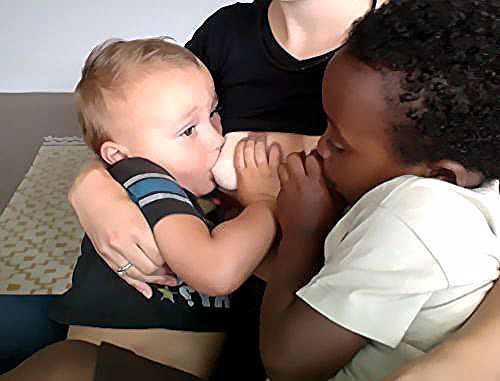 Normally, when feeding, a predator secretes a pellet from undigested wool and bones. This is a normal physiological component for a bird of prey. Do not forget the predator must be fed with the carcasses of animals and birds, and very rarely, only as a last resort, with meat and nothing else. Adult birds are given food 1 time per day, chicks 3-6 times a day, the number of feedings depends on age. Adult predators need to arrange a hungry day once every seven days, but there should be fresh water. Be sure to feed half the diet once a week, and do not forget about fresh water. This is useful and will be a good prevention against bird obesity, physiologically it is similar to the natural habitat of a predator in nature. In the wild, a predator cannot always catch prey normally. Therefore, he does not always have food in his diet. nine0005
Normally, when feeding, a predator secretes a pellet from undigested wool and bones. This is a normal physiological component for a bird of prey. Do not forget the predator must be fed with the carcasses of animals and birds, and very rarely, only as a last resort, with meat and nothing else. Adult birds are given food 1 time per day, chicks 3-6 times a day, the number of feedings depends on age. Adult predators need to arrange a hungry day once every seven days, but there should be fresh water. Be sure to feed half the diet once a week, and do not forget about fresh water. This is useful and will be a good prevention against bird obesity, physiologically it is similar to the natural habitat of a predator in nature. In the wild, a predator cannot always catch prey normally. Therefore, he does not always have food in his diet. nine0005
As a rule, birds of prey do not drink in good and moderate weather. And during the heat, they drink a lot of water and love to swim.
There are the following feeding norms for raptors: for a long-eared or short-eared owl, kestrel, hobby falcon, sparrowhawk, the norm of food per day is 2-3 mice or chicken, for the gray owl, goshawk 2-3 mice or chicken, or one quail.
When feeding a sick bird, the food should be served with a wooden stick about 10 cm long. When force-feeding hawks and owls, the meat should be placed on the tip of the stick and pressed tightly against the bird's beak. The bird will open its beak, and you need to carefully push the meat into the beak and turn the stick. The meat that enters the beak can still be slightly pushed, thereby provoking a swallowing reflex in the bird. This is done carefully so as not to scratch the back wall of the pharyngeal mucosa. In this process, you can not use metal objects, you can injure the bird's beak. nine0005
If the bird is in good condition, the food should be placed on a clean plank or stump and allowed to eat on its own. If the bird has injuries, then food should be placed behind it on the perch.
When feeding kestrel, crickets and grasshoppers can be used in addition. The osprey is a fish-eating bird, but sometimes it can be fed with beef meat, this is recommended only in extreme cases. For her, it is necessary to have a large tank of water, this is necessary for bathing. nine0005
For her, it is necessary to have a large tank of water, this is necessary for bathing. nine0005
If you have little owls and you want to teach them to hunt on their own, then you need to place a lamp near the cage and turn it on in the evening. Insects flying towards the light will be good prey for owls and nightjars.
A little about owls.
You need to know that almost all owls are very inquisitive and mischievous creatures, when they become pets, then you take full responsibility for the life and safety of the owlet. For the most part, owls are conservatives, they quickly get used to a new habitat and like to have all the surrounding objects and furnishings in their places, and nothing has changed. Japanese quail are normal food for owlets. This bird can be purchased at large grocery supermarkets. The quail carcass is cut into small pieces along with the bones, the bones are crushed as small as possible. Large and sharp bones are removed. When feeding a medium-sized owlet, the pieces of food are cut into small pieces of about 1 cm by 1 cm. In addition to quails, you can feed mice and day-old chickens chopped into pieces. nine0005
In addition to quails, you can feed mice and day-old chickens chopped into pieces. nine0005
In cases where it is not possible to quickly find normal food, you can feed the owlet with chicken hearts or pieces of beef heart for 1-2 days. And in the shortest possible time it is necessary to find normal and complete food.
Pork, beef and sausage must not be fed to the owlet.
Very rarely, chicken or turkey fillets, rabbit meat, or hammered chicken necks can be fed. Additionally, you can use chicken liver, but owls can peck it reluctantly and you don’t need to give it a lot. nine0005
Food in the form of small pieces should be given directly to the owlet in the beak, especially when he asks for food by opening his beak. Because he can't eat on his own.
A medium-sized owlet should consume about 50 grams of food per day.
One should never forget that a bird of prey caught in nature always remains a predator.
It should immediately be noted that almost all large species of falcons living in Ukraine are listed in the Red Book.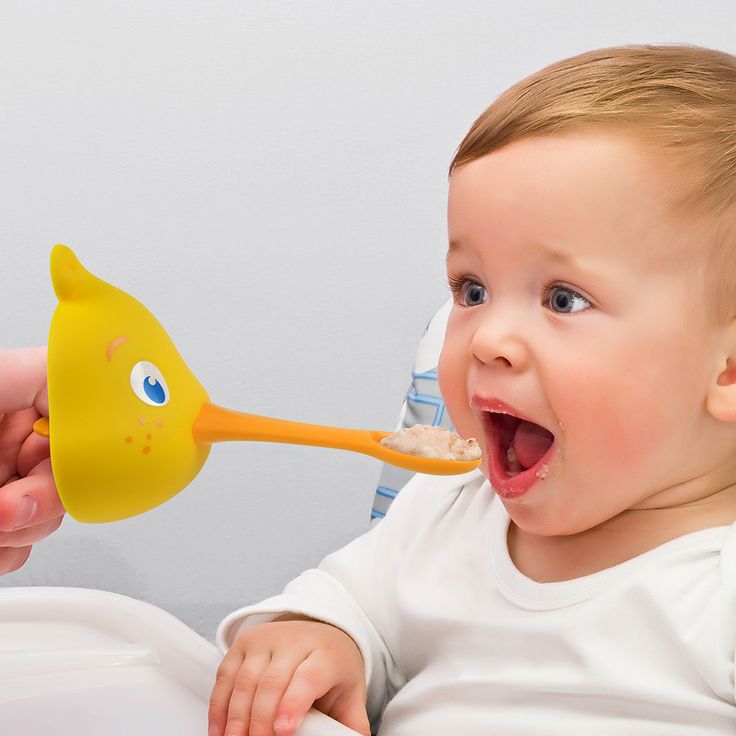 Therefore, it is forbidden for private individuals to keep them. The exception is falcons purchased in a specialized nursery that breeds these birds. A hawk can settle in your house only after a permit is received from the Ministry of Ecology and Natural Resources. A permit is issued to a specific person for a specific bird. In case of illegal possession of a falcon or hawk, the bird is confiscated from the perpetrator, and he himself is held accountable under the current legislation. Therefore, everyone who wants to become a real falconer, first of all, must make sure that his hobby does not conflict with the law. Despite the fact that the hawk is not as exotic as, say, a crocodile in the bathroom, its maintenance requires certain conditions and, most importantly, sufficient knowledge. Unfortunately, it also happens that, sincerely wishing well for his pet, a novice falconer causes him almost irreparable harm. What conditions must be observed in order for the bird to feel comfortable in your home? First, there should be a lot of free space and air.
Therefore, it is forbidden for private individuals to keep them. The exception is falcons purchased in a specialized nursery that breeds these birds. A hawk can settle in your house only after a permit is received from the Ministry of Ecology and Natural Resources. A permit is issued to a specific person for a specific bird. In case of illegal possession of a falcon or hawk, the bird is confiscated from the perpetrator, and he himself is held accountable under the current legislation. Therefore, everyone who wants to become a real falconer, first of all, must make sure that his hobby does not conflict with the law. Despite the fact that the hawk is not as exotic as, say, a crocodile in the bathroom, its maintenance requires certain conditions and, most importantly, sufficient knowledge. Unfortunately, it also happens that, sincerely wishing well for his pet, a novice falconer causes him almost irreparable harm. What conditions must be observed in order for the bird to feel comfortable in your home? First, there should be a lot of free space and air. This does not mean that the hawk will fly around the apartment, but a low ceiling, a small room or a narrow corridor depress him, because the natural habitat of this predator is forest expanses. Considering that at home the hawk usually sits on a special stand, fastened to it with a thin cord, it is quite possible to place it, for example, on a balcony. Naturally, in this case, the contact of the bird with neighbors or "well-wishers" should be completely excluded. The stand itself, as a rule, is a very stable and rather heavy structure, vaguely resembling a glass, the upper part of which is made of a fairly soft material. It is convenient for a hawk to sit on such a stand; to turn it over, and even more so to fly away with it, he cannot. Birds achieve absolute calmness by putting a hood on it. This elegant piece of equipment is made of leather, it is something between an intricate knight's helmet and a tanker's headdress. In the hood, the hawk not only sleeps peacefully, being at home, in it the bird can be transported in vehicles.
This does not mean that the hawk will fly around the apartment, but a low ceiling, a small room or a narrow corridor depress him, because the natural habitat of this predator is forest expanses. Considering that at home the hawk usually sits on a special stand, fastened to it with a thin cord, it is quite possible to place it, for example, on a balcony. Naturally, in this case, the contact of the bird with neighbors or "well-wishers" should be completely excluded. The stand itself, as a rule, is a very stable and rather heavy structure, vaguely resembling a glass, the upper part of which is made of a fairly soft material. It is convenient for a hawk to sit on such a stand; to turn it over, and even more so to fly away with it, he cannot. Birds achieve absolute calmness by putting a hood on it. This elegant piece of equipment is made of leather, it is something between an intricate knight's helmet and a tanker's headdress. In the hood, the hawk not only sleeps peacefully, being at home, in it the bird can be transported in vehicles. nine0005
nine0005
Secondly, the question of proper feeding of your pupil is vital. In nature, the basis of its diet is made up of small rodents and small birds: crows, pigeons, rooks, partridges, etc. It is categorically contraindicated to approach the issue of his nutrition with "universal" standards - not only food from your table, but also the use of raw beef, not to mention pork, are harmful and lead to diseases and inevitable death of the bird. If you have the slightest health problems with your feathered friend, you should immediately contact a veterinarian specializing in the treatment of birds. The main signs of the disease are lethargy, frizziness, sticky plumage, significant loss of feathers. nine0005
Thirdly, "joint" living presupposes training, or rather, accustoming a hawk to a person. In the previous issue of the magazine, the processes of taking out and preparing for hunting were already described. It should be repeated that in this matter both the purely physical help of like-minded friends and the advice of experienced falconers are needed. In order for the hawk to be in good shape, after completing the training, he is given the opportunity to fly independently while walking and hunting. The walking route should be carefully thought out so that your pet does not catch the beloved kitten of the local house manager somewhere near the entrance and does not cause disturbance to others. nine0005
In order for the hawk to be in good shape, after completing the training, he is given the opportunity to fly independently while walking and hunting. The walking route should be carefully thought out so that your pet does not catch the beloved kitten of the local house manager somewhere near the entrance and does not cause disturbance to others. nine0005
Often the maintenance of a hawk is based not only on a great love for flying predators, but also on a completely prosaic interest - using it as a hunter's assistant. In this case, you need to know the following: he will help until he learns that, regardless of the results of the hunt, he will receive his piece of meat upon returning to the glove. Therefore, the hawk is usually hunted for no more than five years, and then released into the wild.
The main thing that every novice falconer should clearly understand is that the world of birds lives according to its own laws and customs, which do not at all coincide with the norms of human behavior. The hawk will never look at life through the eyes of a person or unquestioningly obey him. Only an understanding of bird psychology, based on deep knowledge and experience, opens the way to success. nine0005
The hawk will never look at life through the eyes of a person or unquestioningly obey him. Only an understanding of bird psychology, based on deep knowledge and experience, opens the way to success. nine0005
Keeping any animal makes the owner responsible for the fate of his pet. At the same time, having decided to get a dog or a cat, we roughly imagine the range of problems that we will have to face. In the situation with a bird of prey, the situation is much more complicated, and no associations with a canary or a budgerigar are inappropriate here. The decision should be based not on an emotional outburst that arose under the influence of only one "I want", but on a real assessment of one's capabilities. Well, if, after carefully weighing all the pros and cons, you nevertheless decided that there should be a hawk in your house - good luck and prosperity to you, mister future falconer. nine0005
Hawk chick - captivity, feeding, aviary
Good afternoon, lovers of birds and hunting. The hawk helps a lot in hunting. Today we give advice about feeding chicks, caring for a bird and an aviary. How is a hawk chick raised in captivity?
The hawk helps a lot in hunting. Today we give advice about feeding chicks, caring for a bird and an aviary. How is a hawk chick raised in captivity?
A falconer who wants to take a chick must be sure that he will have enough time to feed a small hawk, with whom it is desirable to spend all daylight hours.
Never handle a chick; the bird will remember this and then can be very afraid of the hands and face. This deficiency in the nest is rather difficult to correct. nine0005
Content of the article:
- Chrybnza hawk - Content in captivity, feeding, aviary, aviary
- How to take a hawk chick from the nest
- Feeding the hawk chick
- Content of the hawk chick 9004 decided to devote three warm months to growing and taking out the chick. The best way is to draw up a formal agreement with one of the hunting grounds (preferably from the southern regions of the country). In most hunting grounds, hawks are, at best, tolerant.
- At seven to eight o'clock in the morning;
- Chicks usually digest the contents of the crop within four to six hours, during breaks between feedings the chick should sleep a lot;
- Last feeding - one hour before dusk.

 nine0005
nine0005 Thus, you will have grounds for keeping a bird of prey, which is under the protection of the international convention CITES. Then you should contact the Ministry of Environmental Protection to obtain permission to keep the goshawk in the country.
How to take a hawk chick from the nest
If a hawk chick is taken from the nest before seven days old, it is advisable to put on a ring that cannot be removed, it will be given to the bird instead of a certificate. The ring contains an individual number, year of birth. nine0005
If the hawk is bred in captivity (sometimes such goshawk breeding is successful), the organization that is engaged in breeding is indicated. The ring can be made of aluminum or any other non-corrosive light metal.
Bird ring sizes recommended by the International Falconer Society IAF: for males - 11.5 mm; for females - 12.5 mm; height - from three to six millimeters.
Preparations for taking a bird should begin long before spring (registration of the necessary documents, searching for a nest, determining the pair of birds from which it is planned to take a baby).
 nine0005
nine0005 If for some reason you do not like the bird you have adopted, you must return the chick to the nest at the age of no more than three weeks.
The only or last chick should never be taken from the nest - birds may refuse to nest in this area.
You are watching the nest, determining by the amount of droppings under it, whether the chicks have hatched. If you climb onto the nest earlier, in half the cases the hawk, being one of the most cautious birds, leaves even the hatched clutch. nine0005
Watch the birds from the shelter, see how the partners pass the food. After the transfer of food, when the chicks have already hatched, the female will stand on the edge of the nest and tear off small pieces from the prey.
If you caught (at least approximately) the moment of hatching, you can visit the nest in a few days. The difference in age between the first and last chick can be a week.
As a rule, hawks do not abandon their chicks.
 Climbing to the nest should be in warm weather, but not at dusk, otherwise the bird will not sit on the nest until morning, and the chicks will die from hypothermia. nine0005
Climbing to the nest should be in warm weather, but not at dusk, otherwise the bird will not sit on the nest until morning, and the chicks will die from hypothermia. nine0005 It is better to visit in the middle of the day, usually by this time the hawk chick will have been fed and will better endure the transport. You must have a fresh carcass of a sparrow or dove with you.
If the chick has an empty crop, it should be offered finely chopped pieces of fresh, preferably not chilled meat. The older the chick removed from the nest, the longer it can go without food.
It should be remembered: with every day spent among nature, the future "hunter" hawk grows wilder and wilder. There are usually three age periods in which a hawk chick can be removed from the nest. They differ greatly in terms of maintenance and cultivation. nine0005
Feeding a hawk chick
Five to twelve days old, this hawk chick requires the most of your time and attention. At this age, he should be fed three to four times a day.

It is desirable to start feeding the little goshawk in captivity with fresh carcasses of sparrows, domestic pigeons, fledglings and small crows and rooks.
For ethical reasons, only mass species of birds, constant companions of humans (house sparrows, field sparrows, garden doves, rock doves, crows, rooks and magpies) should be used as food. nine0005
The abundance of these species is directly related to the anthropogenic landscape and there is a choice almost everywhere.
During its development, the chick needs a large amount of minerals, so it is necessary to ensure that the baby hawk daily receives, in addition to meat, carcass pieces with skin and crushed non-sharp bone fragments.
Minced meat should be sprinkled lightly with normal pharmacy saline. Sometimes you can freeze bird carcasses for up to two weeks and alternate fresh meat with ice cream or chilled. nine0005
It is desirable that a small hawk under the age of two weeks should receive at least one or two carcasses of sparrows per day.
 The basis of nutrition can be domestic pigeons and Japanese quail.
The basis of nutrition can be domestic pigeons and Japanese quail. It is good to add a fresh quail egg to minced meat (without the shell, it may contain salmonella).
What kind of meat should not be fed to a hawk? It is considered undesirable to feed fatty meat of large poultry and rabbits.
Day-old chick meat can be added to the ground meat. It is impossible to feed a growing organism exclusively with chickens, it will not be enough for the development of trace elements and minerals. You can specially prepare domestic pigeons and quails for feeding to chicks. nine0005
For this, vitamins and amino acids are used, which are added in double concentration to the drinking water of pigeons a week before slaughter. The kidneys and liver of such birds are not used.
Such prophylaxis is especially useful in five-day courses with weekly breaks during the entire period of feeding. Of course, only well-fed, healthy-looking birds can be used as food for birds of prey.

Intestines and crops in birds larger than sparrows should preferably be removed. A small hawk chick should be fed when there is no meat left in the crop from the previous feeding. nine0005
At the age of one week, the hawk chick is already able to shed pellets (undigested remnants of feathers and bones, collected in a dense lump).
For the normal functioning of the digestive system of a bird of prey, it is necessary to drop the pellet daily. With the growth of the chick, you can slightly increase the number of non-plucked feathers on the carcass.
You can mix meat with small soft feathers during the evening feeding and wait for a big pellet the next morning, after which you can start the first feeding. nine0005
The following feeding regimen can be advised:
If a hawk chick is hungry, it can eat almost double its ration at a time. Then the time until the next feeding increases.
Sometimes the hawk chick eats reluctantly. This can be caused by hot weather, loose pellets, fatty poultry meat. In this case, it is better to wait a few hours when he is more hungry. nine0005
A small goshawk can generally starve for quite a long time, but this, as a rule, is reflected in the future on the width of the chest, and if the bird is older, on the quality of the “hunter” plumage.
It is very good when in extreme heat the bird can be in a dry room where the temperature does not exceed 22ºС.
According to the results of observations, in cool years, chicks in nests grow large and broad-chested - thanks to active feeding. The speed and strength of the future hunter depends on this. nine0005
All daylight hours, except for cold rainy or windy weather, the chick should be outdoors.
Keeping a hawk chick
Requires constant direct sunlight in the morning, in hot afternoons through tree branches or camouflage netting.
 It is advisable to keep the chick for up to three to four weeks in a cage with a removable bottom, one of the sides of which rises during feeding.
It is advisable to keep the chick for up to three to four weeks in a cage with a removable bottom, one of the sides of which rises during feeding. The cage should be moved frequently and kept in close proximity to people and dogs at all times. Even before you have a chick, you need to prepare an aviary of a certain design or adapt a balcony. nine0005
The aviary is easily made from a wooden frame, sheathed with burlap or canvas from the inside, leaving only the front wall and 2/3 of the roof open.
A metal mesh with small cells should be placed on top, a fishing net made of nylon thread with cells up to 3 centimeters is pulled over it at a distance of 20-30 centimeters.
The front wall of the enclosure is turned towards the most visited part of the territory and consists of polished wooden slats with rounded sides without crossbars, which are placed at a distance of 30 mm from each other, with the width of the slat itself 20 mm. nine0005
It is better when the hawk enclosure has two such walls (the second wall faces east).


 Birds at this age will fall out of their nests frequently, and the adult birds overhead will retrieve them in due time. Trial and error is the only way for a bird to learn the ins and outs of flight. If you find a featherless baby raptor or songbird with unopened eyes, place them back into the nest immediately or take them inside for care. You must call a wildlife rehabilitator as soon as possible to ensure a raptor’s survival. Baby birds of prey typically eat only protein (mouse, rodent, etc) and the average homeowner will not have a stash of chopped mouse meat in the refrigerator.
Birds at this age will fall out of their nests frequently, and the adult birds overhead will retrieve them in due time. Trial and error is the only way for a bird to learn the ins and outs of flight. If you find a featherless baby raptor or songbird with unopened eyes, place them back into the nest immediately or take them inside for care. You must call a wildlife rehabilitator as soon as possible to ensure a raptor’s survival. Baby birds of prey typically eat only protein (mouse, rodent, etc) and the average homeowner will not have a stash of chopped mouse meat in the refrigerator.
 Baby raptors become food aggressive as they mature, a characteristic that ensures survival of the fittest in the wild. Because of this, the rehabilitator’s puppet and hand usually take quite a beating. Warm mouse meat is the typical fare during this time.
Baby raptors become food aggressive as they mature, a characteristic that ensures survival of the fittest in the wild. Because of this, the rehabilitator’s puppet and hand usually take quite a beating. Warm mouse meat is the typical fare during this time.
 For birds with almost no contact with humans, the release can take place as soon as they are able to fly and hunt, and has little to do with staging. And adult bird recovered from an injury will have a human handler, and though not imprinted on that handler, a bond will be present that allows gradual release.
For birds with almost no contact with humans, the release can take place as soon as they are able to fly and hunt, and has little to do with staging. And adult bird recovered from an injury will have a human handler, and though not imprinted on that handler, a bond will be present that allows gradual release.
 Even so, most rehabilitators are operating on personal funds. In light of this, if you utilize the services of a rehabilitator, we strongly recommend that you offer a donation toward their endeavor.
Even so, most rehabilitators are operating on personal funds. In light of this, if you utilize the services of a rehabilitator, we strongly recommend that you offer a donation toward their endeavor.









